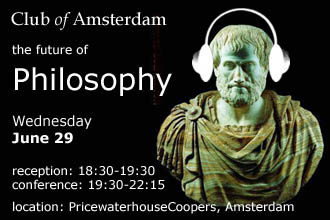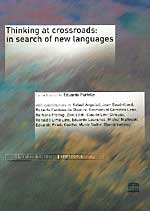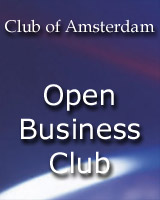
Why Philosophy is Everybody’s Business

Mortimer Adler
1902-2001
Why Philosophy is Everybody’s Business
by Mortimer Adler
[an excerpt]
One can be a generally educated human being without being knowledgeable in this or that specialized field of empirical science. Such knowledge belongs to the specialist, not the generalist. But one cannot be a generally educated human being without knowing the history of science and without having some philosophical understanding of science. Becoming a generally educated human being also involves some grasp of the history of history and of philosophy, and some understanding of the philosophy of history and philosophy. That is one reason I say that philosophy is everybody’s business.
Everyone is not called upon to be a lawyer, a physician, an accountant, or an engineer; nor for that matter is everyone called upon to engage in some field of historical or scientific research. But everyone is called upon to philosophize; thinking individuals, whether they know it or not, have some traces of philosophical insight or analysis in their moments of reflection. To be reflective about one’s experience or about what human beings call their common sense is to be philosophical about it.
Why philosophy is everybody’s business, as no other use of one’s mind is, is that every thinking individual is, in reflective moments, a philosopher, and that everyone philos-ophizes and is enriched by doing so is not to say that everyone should aspire to become a professor of philosophy. Try to imagine a world in which everything else is exactly the same, but from which philosophy is totally absent. I do not mean just academic philosophy; I mean philosophizing in every degree — that done by ordinary men and women or inexpertly by scientists, historians, poets, and novelists, as well as that done with technical competence by professional philosophers.
Since philosophizing is an ingrained and inveterate human tendency, I know that it is hard to imagine a world without philosophy in which everything else is the same, including human nature; yet it is no harder than imagining a world without sex as one in which everything else is the same.
In the world I have asked you to imagine, all the other arts and sciences remain continuing enterprises; history and science are taught in colleges and universities; and it is assumed without question that everyone’s education should include some acquaintance with them. But philosophy is completely expunged.
No one asks any philosophical questions; no one philosophizes; no one has any philosophical knowledge, insight, or understanding; philosophy is not taught or learned; and no philosophical books exist. Would this make any difference to you? Would you be completely satisfied to live in such a world? Or would you come to the conclusion that it lacked something of importance?
You would realize — would you not? — that even though education involved acquiring historical and scientific knowledge, it could not include any understanding of either science or history, since questions about history and science (other than questions of fact) are not historical or scientific but philosophical questions

News about Philosophy

Considerations on Web-Philosophy
by Martin Herzog
[…]
enhance critical thinking
The sciences have to learn again, that the right answer can only emerge, if the right questions are asked.
reintegrate speculative thinking, especially heuristics
Speculari (Latin) means: to look at something from far away. Speculative thinking, something unthinkable for scientists, is needed, if you want to deal with ideals (platonic or other) and utopiae. Without such speculative fore-sights its not possible, to create political or social development plans for the future, as any future is always (more or less) speculative.
reintegrate values in argumentation and decision processes
Values are decisive in that field, but disintegrated from scientific research.
interrelate cluttered knowledge and preserve contexts [the foundation of web-philosophy]
Each scientific discipline should in fact have its philosophers, mediating between related fields that might be quite far from each other, what concerns academic structures, especially what concerns the split between humanities and natural sciences. The multidimensionality of the web allows us to group themes, to form clusters. Such a way presentation may tackle large as well as deep contents. The arrangement of knowledge in clusters allows access from different perspectives, which do not get lost in a tangled mix, thanks to the subportals in the center of the clusters.
intensify and clarify dialogue with knowledge users and in general with the population
Scientists (and philosophers) should defend their thesis publicly, not the commercial use of their inventions.
There should be a philosophy, and philosophers, that tackle real world problems and real time problems.
That would give philosophy a real push, as few people are interested in academic discussions on reinterpretation of old texts.

Philosophy with Children is a movement that has been in existence more or less formally for as long as there have been adults who are interested in children’s ideas about the world, about themselves as human subjects, and about the fundamental issues-epistemological, ontological, aesthetic and ethical-which are the common heritage of us all. In addition to educators who were also writers-like Tolstoy or Bronson Alcott-who recorded and reflected on their conversations with children, there are no doubt countless unsung teachers and parents who have listened with a keen ear-sometimes philosophically trained and sometimes not-to their child interlocutors.
The British poet William Wordsworth, in one of the most popular poems of the 19th century-“Ode: Intimations of Immortality from Recollections of Early Childhood” – characterized the young child as “best philosopher.” And anyone who has dialogued with groups of children as young as six or seven can attest to the liveliness and freshness of their thought–their startlingly vivid capacity for exemplification, for analogical thinking, their sensitivity to philosophical concepts, their enthusiasm for dialogical deliberation, and their capacity (Piagetians notwithstanding) for working with the fundamentals of propositional, relational, and conditional logic. Given the basic connection between logic and the structures of language, that capacity is in fact typically as well-developed among children as among the majority of adults.
News about the future

The Memory Glasses is a wearable, proactive, context-aware memory aid based on the MIThril platform and wearable sensors. The primary goal of this project is to produce an effective memory aid and reminder system that requires a minimum of the wearer’s attention.
The function of the system is to deliver reminders to the wearer in a timely, situation-appropriate way, without requiring intervention on the part of the wearer beyond the initial request to be reminded. In other words, the system behaves like a reliable human assistant that remembers reminder requests and delivers them under appropriate circumstances. Such a system is qualitatively different from a passive reminder system (such as a paper organizer) or a context blind reminder system (a modern PDA) which records and structures reminder requests but which can not know the user’s context.

ABI: RFID, Intelligent Sensor Nets to Benefit From Printed, Organic Electronics
Printed and organic electronics technologies are likely to be a key component of radio frequency identification (RFID) technology and other “intelligent sensor networks” in the next few years, according to ABI Research.
Printed electronics technologies are already starting to find applications in the automotive industry, and organic components are finding their way into mobile phones, said ABI. Printed RFID antennas are another near-term application of printed electronics.
While silicon and other inorganic materials still dominate in the design of “ubiquitous networks” such as RFID systems, ABI Research’s Erik Michielsen noted that, “RFID is the first iteration of intelligent sensor networks. There will be many additional waves. Companies that are looking to create such networks in and beyond the supply chain must take a serious look at the printed and organic electronics market and understand where, when and how they can be applied as intelligent sensor networks evolve.”
Next Event: Wednesday, June 29

the future of Philosophy
Wednesday, June 29, 2005
reception: 18:30-19:30, conference: 19:30-22:15
location: PricewaterhouseCoopers, Prins Bernhardplein 200, Amsterdam [next to Amstelstation], free parking.
Huib Schwab: It’s spirituality stupid
John Grüter & Mathijs van Zutphen: VISHandCHIPZ stand-up philosophy
Monica Soeting: Philosophy – a method for returning to realityModerator: Homme Heida
Vision 2020 Reports – India
Vision 2020 Reports – India
by Technology Information, Forecasting & Assessment Council, TIFAC
In in November 1993, the Technology Information, Forecasting and Assessment Council (TIFAC), a unique institution in India, deliberated and identified the urgent need to create a long term technology vision for India upto 2020 in various emerging technology areas. The task was undertaken by seven major task forces and a mega task force with ten panels covering all vital sectors of its economy. This is a unique endeavour and the joint effort of more than 500 members from Users, Industry, R&D Establishments, Academic Institutions, Government Departments and Non-Governmental Organisations which culminated into the technology vision documents on 18 April, 1996. And these have been approved by the TIFAC Council.
The overall vision was created from the inputs received from about 5000 specialists from various walks of life through Delphi surveys.
Some findings are:
Life Science & Biotechnology
Developments in Life Sciences and Biotechnology offer immense prospects for better crop varieties, health care systems, effective environmental practices and also in industrial sectors.
The panel has covered in detail, the elements requiring thrust and technology upgradation; R&D needs and opportunities; material resources, infrastructure & human resources; Programmes & policies; and key areas for industrial development and growth for all these areas.
Some salient findings emanating out of this study are:
- Genetic engineering of model plants like tomato, tissue culture of cereals & pulses, isolation and analysis of genes would emerge as important items in the area of agricultural applications. Panel on Food and Agriculture also gives many more details in its report.
- In the area of health care, vaccine development for infectious and vector borne diseases, development of new techniques and drugs for fertility control, specific and non invasive treatment for cancer are emerging as key elements. The panel on health care has also addressed these elements in its report.
- Isolation & identification of bioactive molecules as drugs from Indian marine bacteria, development of elite strains of agarophytes by genetic manipulation and its culture are considered to be important in Marine Biotechnology area.
- Animal hormones, tissue cultured disease/pest resistant plant varieties, genetically improved seeds, home tests for diagnosis of diseases, monoclonal antibodies for diagnostics, molecular mechanisms of drug resistance are envisioned to be of prime importance in the area of Industrial Biotechnology.
- Establishment of regional medicinal plant gardens with variety of agro-climatic conditions, national referral centre for generation and supply of phytochemicals, establishment of a national institute of traditional system of medicine are envisaged to be emerging in the area of Herbal Industry.
- Effective treatment technologies for water, land and air pollution, waste management and recycling, reclamation/ remediation, conservation of biodiversity emerge as life science and biotechnological applications to environmental preservation.
.Electronics & Communication
The world is witnessing an integration of electronics, communication and computer in the form of information technology leading to a revolution in the entire services & manufacturing sectors. Thus we have before us immense opportunities & technological challenges which need to be dealt with a clear vision taking advantages of our strengths.
Salient points of the Vision are:
- Manufacture of passive chip components and computer monitors; focused attempts to set up a mega ‘fab’ in the country by attracting foreign investment; and enhancing the country’s VLSI design capabilities are envisaged in the area of components and microelectronics.
- High speed networks like SONET, use of lasers in industry; analog compatible digital TV are a few important items in the areas of photonics/optoelectronics and consumer electronics.
- Cost effective high speed client server based hardware & software systems; induction of various telecomputing & interactive data services are vital in the areas of Information Technology and Communications.
- Promotion of electronic aids for the disabled and computer education at high school levels have been envisioned in addition to applications of micro elctro-mechanical systems for pollution control and health care. Technological strengths in various select areas of electronics is vital for our competitiveness. There are many strategic applications as well.
- Electronics has a crucial role in assuring better quality of life for our people be it in health care, environment or education. This area has several linkages with almost every sector. It is time we seize the opportunities as envisioned in the report before us without loss of time.
More topics in the report:
- Advanced Sensors
- Agriculture & Food
- Agro-Food Processing
- Civil Aviation
- Chemical Process Industries
- Driving Forces – Impedances
- Electric Power
- Engineering Industries
- Health Care
- Materials & Processing
- Road Transportation
- Strategic Industries
- Telecommunications
- Waterways
- Services
Recommended Book

Thinking at Crossroads: In Search of New Languages (The Philosopher’s Library)
With contributions by R. Argullol, J. Baudrillard, R. Cardoso de Oliveira, E. Carneiro Leao, B. Freitag, Z. Laïdi, C. Lévi-Strauss, R. Lima Lins, E. Lourenço, M. Maffesoli, E. Prado Coelho, M. Sodré, G. Vattimo
Can contemporary thought make its way into the Third Millennium? The philosophers who have contributed to this work have attempted to expose, each one of them using different approches, the ruses by which metaphysics conceals violence, Western reason considers itself the sole holder of truth, and thought casts its shadows on an otherwise unthinkable world.
Each author has strived to reconsider the different nuances of reason, history and tradition, which have been nourished by the achievements and failures arising from encounters with the ‘Other’. There is no turning away from what is strange or baffling – the fissures, intervals, lapses and impurities. For everything seems to indicate that the pathways of thought are still to be discovered, remade, and invented.
Studio créatif of France Telecom R&D
| Studio créatif of France Telecom R&D To explore an imaginary world, return to the present and show now what will be possible in our everyday life in the future – this is the mission of the Studio créatif!“Our multidiscipline teams are composed of engineers, marketing people, sociologists and designers. We work all together to free technology from its traditional universe in order to generate new, unexpected ideas for telecom usages and new services, while applying all possible creativity techniques. The end customer is at the core of our approach, as always in France Telecom R&D’s development process.” As a result, significant innovations are developed from the imagination of our researchers. On this Internet site in particular you will find communicating clothes, the sensitive, interactive home and communicating objects. Forget preconceived ideas of travel and take off with the new e-tourism concept; explore the Imagination Gallery with the dreams and nightmares of Internauts, artists’ visions and science fiction !… |
| The latest concept and prototype wearable communications created by France Telecom’s R&D The optical fiber screen has won the Innovation Prize 2002 award at Avantex, the “international forum for textiles and technology in the future”, scoring a further success in the Creative Studio’s “wearable communications” project. The result is a matrix comprising 8×8 pixels, ie, 64 squares measuring 35x35sq.mm, with 12 optical fibers per pixel. |

Club of Amsterdam Upcoming Events
| Club of Amsterdam Season 2004/2005 |
| June 29, 2005 | the future of Philosophy |

Club of Amsterdam Open Business Club
| |





Customer Reviews
Thanks for submitting your comment!